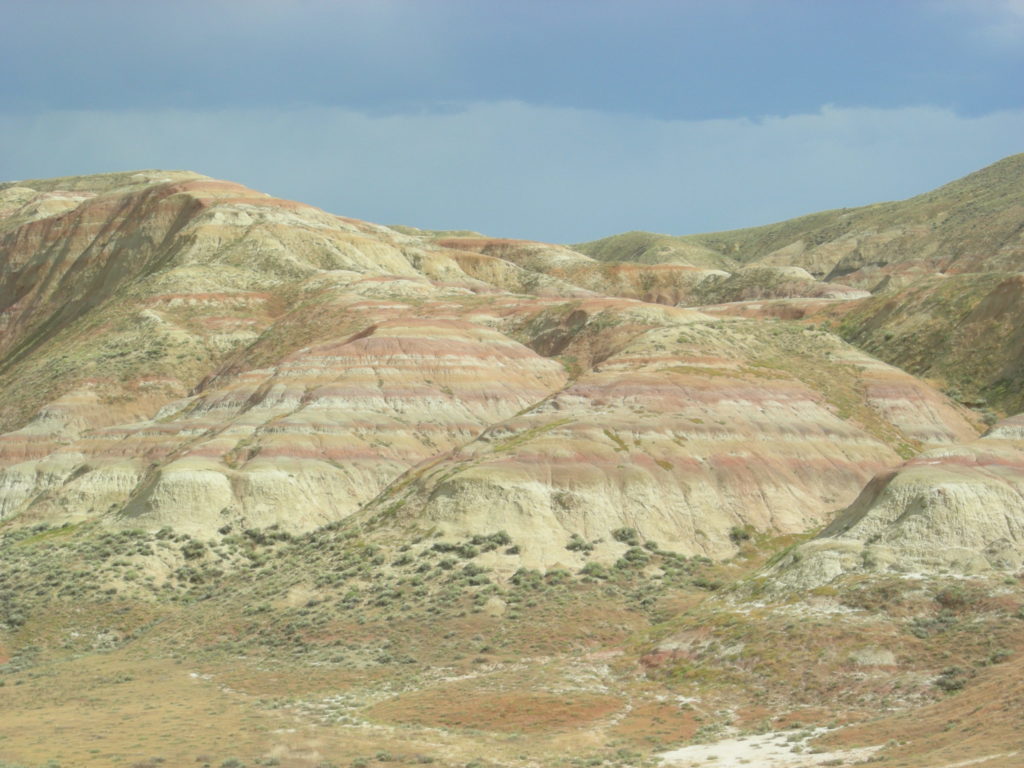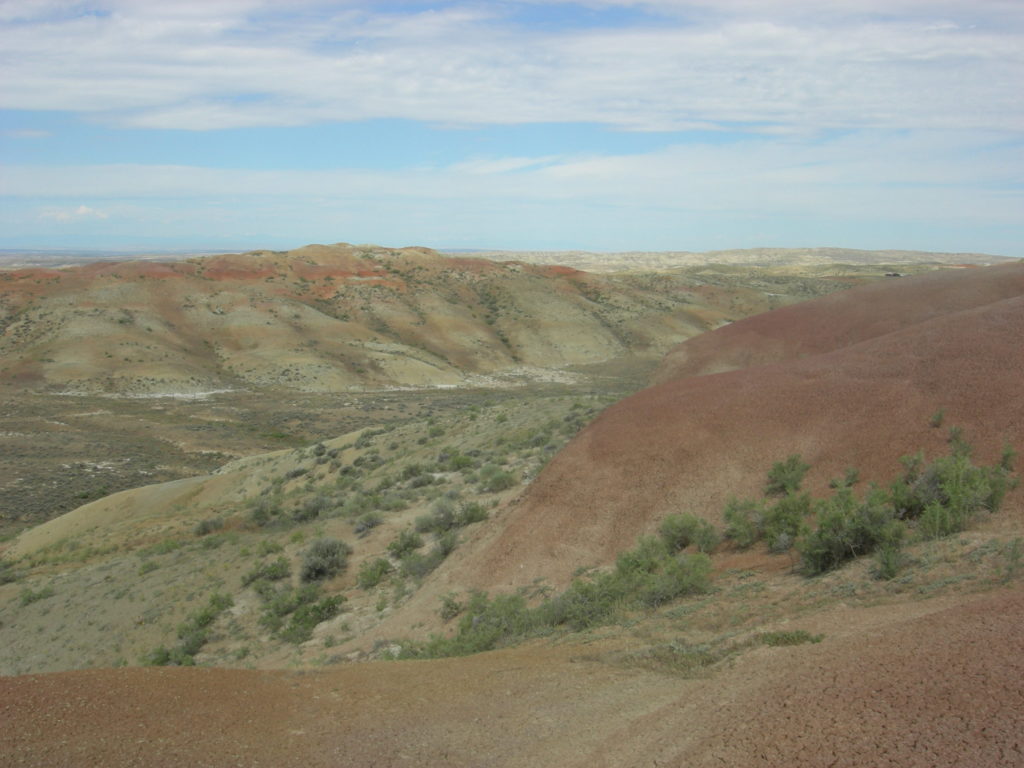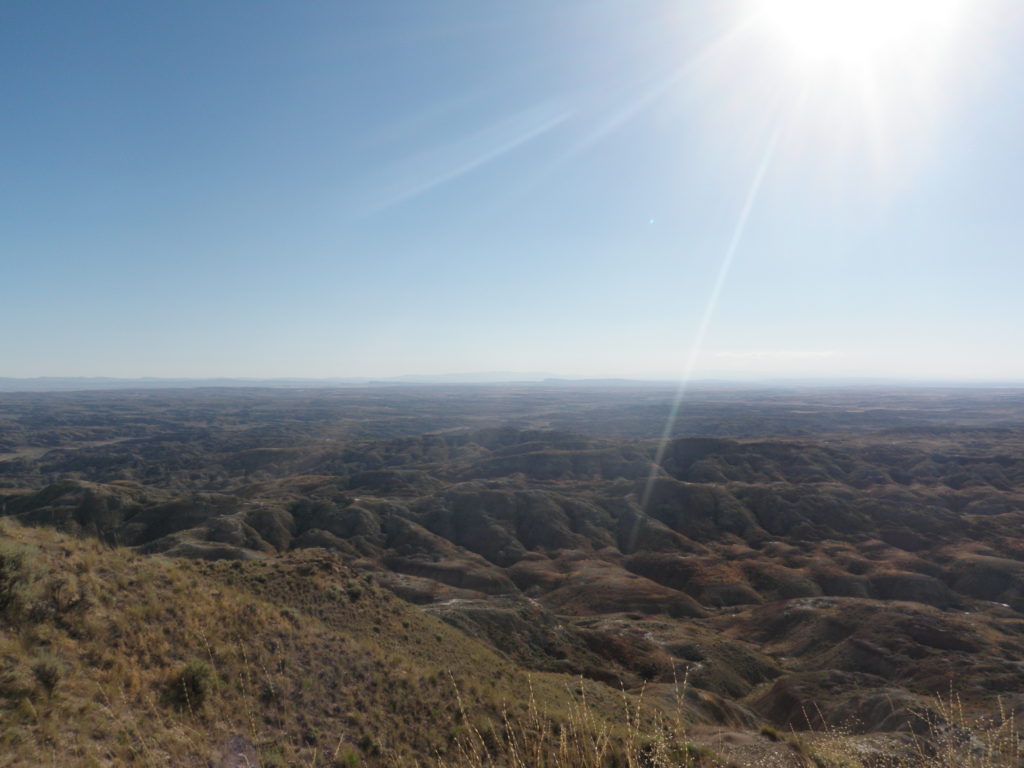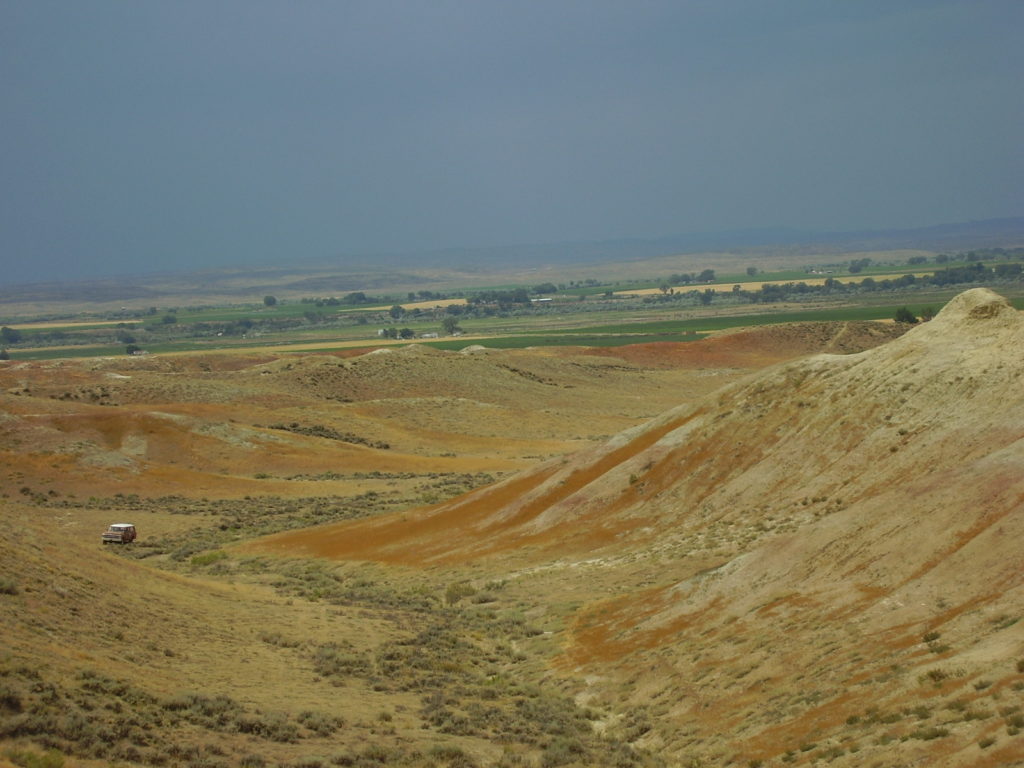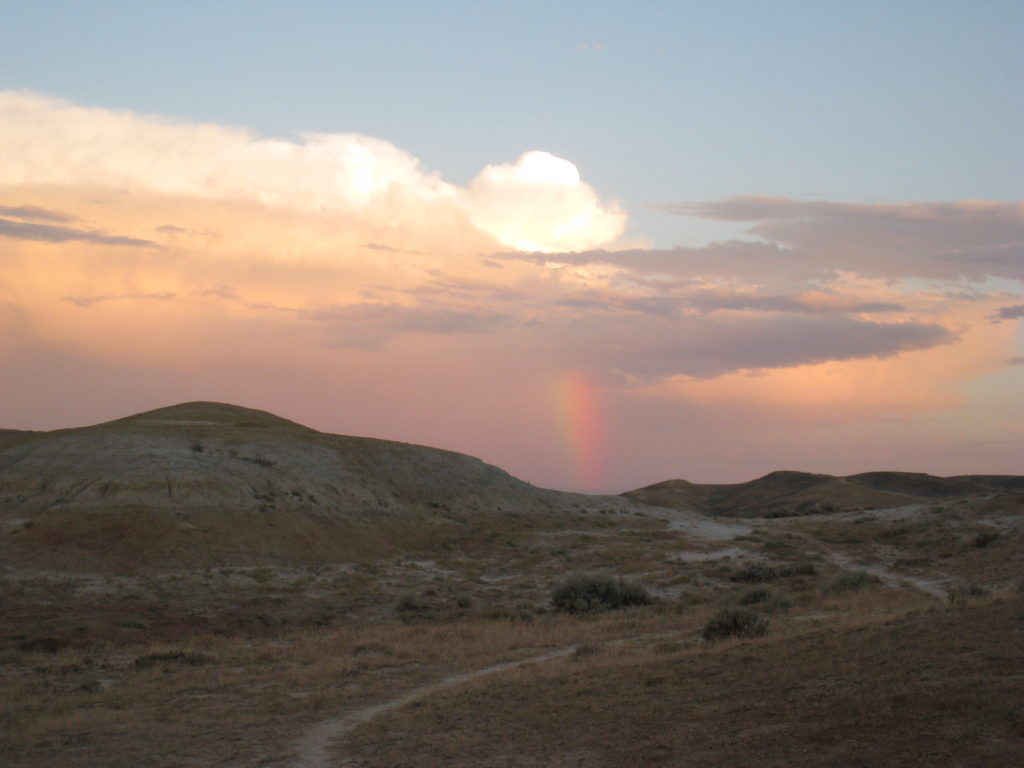Allie Baczynski is an organic geochemist interested in using the chemical signatures of biomarkers derived from ancient plants to reconstruct past landscapes and climate. She is currently a post-doctoral scholar at Penn State working to lower biomarker sample size requirements for isotope analysis.
Today, the Bighorn Basin in north-central Wyoming is mostly badlands – dusty hills home to pump jacks, sagebrush, and rattlesnakes. But during the early Paleogene, the planet was a lot warmer than today, and the Bighorn Basin was a very different place. Wyoming 56 million years ago was balmy and swampy, much like the Carolinas or northern Florida today, where crocodiles and turtles lounged under bald cypress, sycamore, and palm trees. This early Paleogene greenhouse climate state was punctuated by a series of rapid and extreme global warming events known as hyperthermals. The largest and best-studied of these hyperthermal events is known as the Paleocene-Eocene Thermal Maximum, or PETM. The PETM lasted less than 200,000 years and raised mean annual global temperature by 5 to 8ºC. During this time, the Wyoming landscape lost its swamp forests and became more open as temperatures rose, precipitation became more seasonal, and new species of animals and plants migrated to the basin.
The PETM is an important analogue to current climate change because it, too, was driven by a massive release of carbon into the atmosphere. We don’t know exactly where the carbon came from, but we do know that there was a lot of it – roughly 4-5 trillion tons. That’s equivalent to the amount of carbon that would enter the atmosphere if humans burn through all of Earth’s estimated fossil fuel reserves. Despite this similarity, a major difference between the PETM and current climate change is the rate at which carbon was released to the atmosphere. The PETM carbon release took place over thousands to tens of thousands of years, while we are burning fossil fuels on the scale of hundreds of years. This means that even compared with our best analogues from Earth’s past, what we are currently doing to the planet is unprecedented.
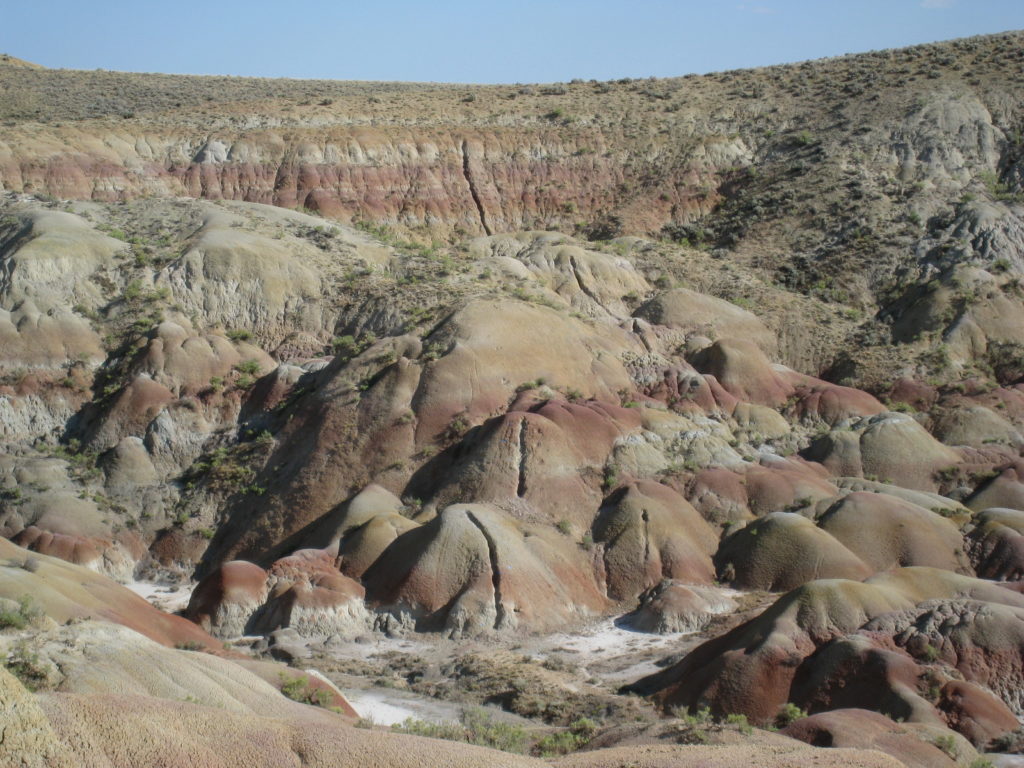
We trench through these soil horizons until we reach hard rock. Rock samples are collected and ground to a fine powder back in the lab for isotope analysis.
I am interested in how soil carbon responded to the PETM. One of the major questions today is whether soils are a source or sink for carbon and how they will react to increasing atmospheric CO2 in the future. To explore how soil carbon responded to the PETM climate perturbation in the Bighorn Basin, my colleagues and I analyzed the stable carbon isotopes of two different PETM carbon archive materials: bulk soil organic carbon and fossil leaf waxes. Our results (published in GSA Bulletin, April 2016) show that the isotopic composition of PETM soil organic carbon was modified by both microbial degradation and the input of older reworked carbon. We estimate that microbial degradation doubled and that fossil carbon input increased by about half. The increase in microbial degradation during the PETM was probably an important positive feedback on PETM warming as it released carbon from the soil into the atmosphere as CO2, and the increase in reworked organic matter suggests increased erosion and re-deposition in response to climate change. These findings suggest that soils might act as a carbon source and positive feedback on global warming, which has important implications for future climate change scenarios.
You can read more about Allie’s research recently published in GSA Bulletin here.
![]() This work is licensed under a Creative Commons Attribution-NonCommercial-ShareAlike 4.0 International License.
This work is licensed under a Creative Commons Attribution-NonCommercial-ShareAlike 4.0 International License.

